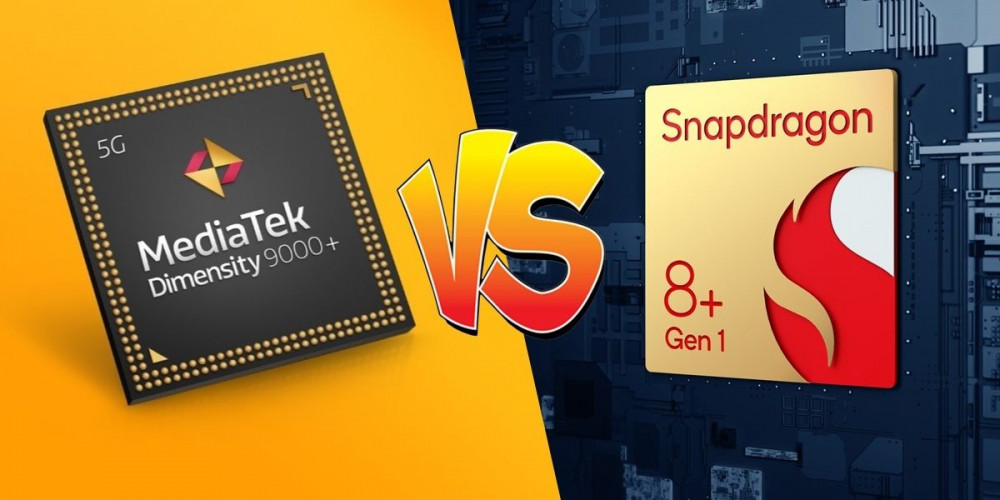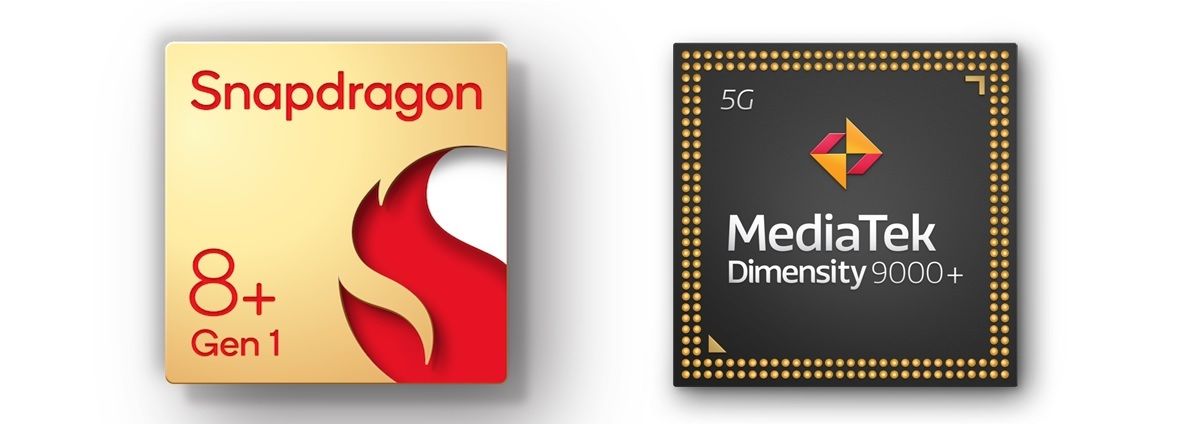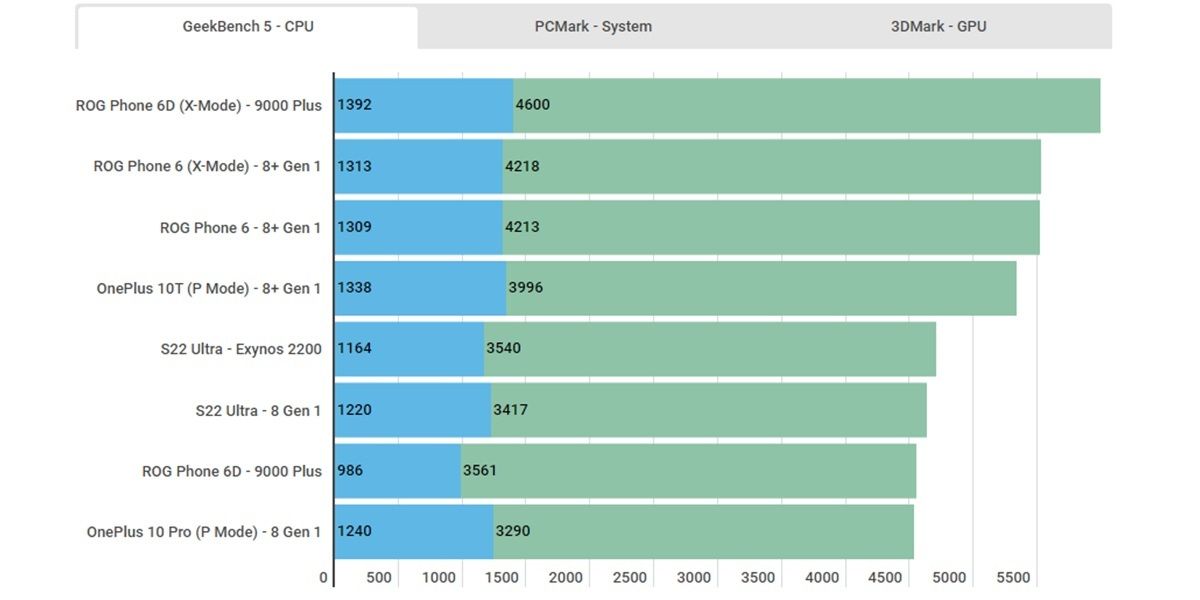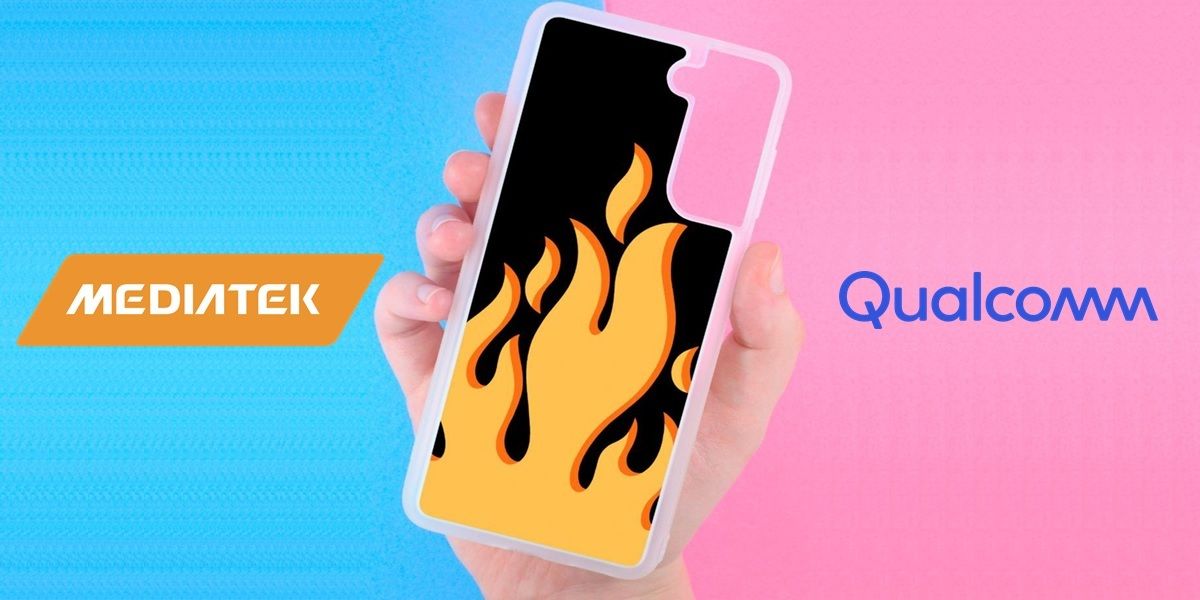
The most powerful processors of 2022 are already here . As usual, the main manufacturers of Android mobile chipsets launch their new high-end processor at the beginning of the year and then present the improved and definitive version.
This year, the Snapdragon 8 Gen 1, Qualcomm’s 4-nanometer processor, received the update that would become the brand’s definitive premium model for 2022 : the Snapdragon 8+ Gen 1.
For its part, the Dimensity 9000 is MediaTek’s high-end SoC for this year and in mid-June they launched its improved variant that becomes the manufacturer’s flagship for this 2022: the Dimensity 9000 Plus.
Well, now that the MediaTek and Qualcomm flagships for 2022 are already on the market, the question inevitably arises… Which is better? Snapdragon 8 Plus Gen 1 or the Dimensity 9000 Plus? Well, join us to find out.
Comparative table of the Snapdragon 8 Plus Gen 1 vs. Dimension 9000 Plus

Since it hit the market, the MediaTek Dimensity 9000+ shattered AnTuTu and unseated Qualcomm’s as the world’s most powerful Android mobile chip. But this was based on the first performance tests carried out with test devices.
Now, phones with these chipsets under the hood are already available on the market. The Asus ROG Phone 6 Pro came with the Snapdragon 8+ Gen 1, while the Asus ROG Phone 6D has the Dimensity 9000+ processor. Well, these two gaming terminals have been used to confront these processors . Do you want to know which one did better? Well, we’ll reveal it to you right away.
|
specs
|
Qualcomm
Snapdragon 8+ Gen 1
|
MediaTek
Dimension 9000+
|
| CPUs | 8 cores : 1x ARM Cortex-X2 core at 3.2 GHz and 1 MB L2 cache. 3x ARM Cortex-A710 cores at 2.8 GHz and 512 KB L2 cache. 4x ARM Cortex-A510 cores at 2.0 GHz. 6 MB L3 CPU cache. | 8 cores : 1x ARM Cortex-X2 core at 3.2 GHz and 1 MB L2 cache. 3x ARM Cortex-A710 cores at 2.8 GHz and 512 KB L2 cache. 4x ARM Cortex-A510 cores @ 2.0GHz. 8MB + 6MB L3 CPU cache at system level. |
| GPU | adreno 730 . | Mali-G710 MC10 . |
| Manufacturing | TSMC’s 4nm technology. | TSMC’s 4nm technology. |
| Screen | Supports qualities of 4K at 60 Hz or QHD + at 144 Hz. | Supports qualities of WQHD + at 144 Hz or Full HD + at 180 Hz. |
| Camera | ISP: Qualcomm Spectra Triple 18-bit. Main sensor up to 200 MP . Supports recording in 8K with HDR at 30 FPS and 4K at 120 Hz. | ISP: 9Gpixel/s 18bit. Up to 320MP . Supports recording in 4K with HDR with three cameras at the same time. It offers an improved night mode. |
| RAM | LPDDR5X at 3200MHz . | LPDDR5X at 3750MHz . |
| connectivity | Snapdragon X65 5G SA/NSA/TDD/FDD modem (10Gbps maximum download speed). Bluetooth 5.3 , Wi-Fi 6E. Bluetooth 5.3. NFC. GPS, Glonass, BeiDou, Galileo, QZSS, NavIC and SBAS . |
5G modem with Sub-6 GHz and 7 Gbps downlink. Bluetooth 5.3 , WiFi 6E 2×2 (BW160), Wireless Stereo Audio, NFC, III-B1C, GNSS, Glonass, BeiDou, Galileo, QZSS and NavIC. |
In performance tests of the main core and the whole set, the Dimensity 9000+ is noticeably superior

When these two processors are compared for high performance demanding tasks, the Dimensity 9000+ proves to be clearly superior. This data comes from an evaluation made with the GeekBench 5 performance benchmark which showed that the MediaTek processor manages with heavy workloads both when testing the main core and when using the set of 3 clusters simultaneously.
This may be because even though both processors have similar CPUs with the same core and cluster configuration at the same speed, the Dimensity 9000+ brings better cache memory . In fact, this launches a third level memory configuration (L3) that combines 8 MB per CPU and 6 MB at the system level.
Now, in favor of the Snapdragon 8+ Gen 1, it should be mentioned that this processor has a slight advantage when it comes to graphics performance . In the 3DMark Wild Life test (the test that puts the GPU to the test) Qualcomm’s chipset outperformed MediaTek’s by 8%. The Dimensity 9000+ uses the Mali-G710 graphics with a 10-core ARM configuration, while the American brand mounts the powerful Adreno 730 GPU in its SoC, a house graphics whose configuration is a secret.
Qualcomm processor remains more stable in sustained performance with less overheating

Although when both SoCs are subjected to demanding tasks, the MediaTek one performs better, things change when it comes to sustained performance over a long period of time . The Snapdragon 8+ Gen 1 is proof that the overheating issues the Snapdragon 8 Gen 1 had was due to Samsung’s 4 nanometer technology.
Let us remember that, for this improved version, Qualcomm entrusted the manufacture of its chipset to TSMC, which has a more energy efficient technology. This makes the Snapdragon 8 Plus Gen 1 maintain a more sustained high performance compared to the MediaTek processor.
However, after ten cycles of execution, the SD begins to decrease its performance a bit, while the Taiwanese brand processor does so much later: after cycle number 16. However, as can be seen in the graph From above, despite this earlier drop in performance, the Snapdragon 8 Plus Gen 1 continues to sustain superior performance in the 3DMark test.
Also, it is worth mentioning that in these stress tests, the Dimensity 9000 Plus gets hotter than the Qualcomm processor , albeit only by a few centigrade difference. After a long gaming session, the MediaTek chip reached temperatures of 53 °C, while the Snapdragon 8 Plus Gen 1 remained at 51 °C.
So… Who has the most powerful processor of 2022? Qualcomm or MediaTek?

If the scores of the main performance benchmarks (GeekBench 5 and AnTuTu) are taken into account, the Dimensity 9000+ is the most powerful processor both in multitasking and when executing demanding tasks . However, when it comes to gaming, the winner is the Qualcomm processor.
Thanks to the enigmatic Adreno 730 graphics, the Snapdragon 8 Plus Gen 1 performs better in graphical tasks and when running demanding video games . This is also influenced by the fact that historically mobile game developers better optimize their titles for Adreno graphics due to the increased popularity of Qualcomm chipsets.
Finally, it is important to mention that the differences in performance between these two processors can hardly be perceived by a common user . Android phones carrying these high-end chipsets under the hood will perform smoothly in any kind of scenario. Specialized tests must be carried out in order to detect these technical differences in performance.
And you… Are you more from Qualcomm or MediaTek?

